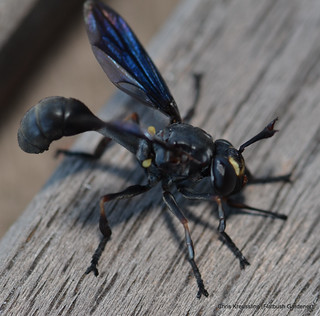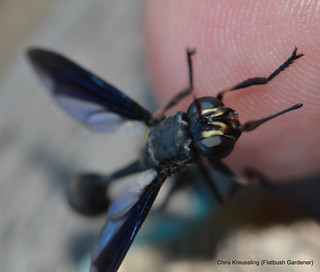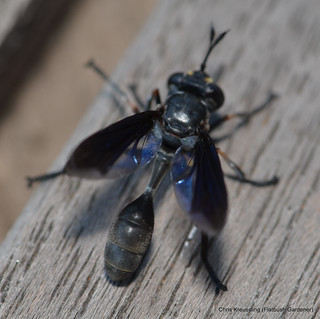A few weeks ago, I tweeted:
2013-06-11 19:57: Found - or rather one of our cats did - an incredible wasp-mimic fly. Chilling in refrigerator for later identification.This is what she found:
2013-06-11 20:01: The fly looks very similar to /Physocephala/
http://bugguide.net/node/view/7190/bgimage except all-black at first glance. Will examine more closely later.

Yes, that is a fly, not a wasp. You can tell it's a fly from the antennae in the center of the face, instead of the top of the head, the large, rounded eyes that cover both sides of the face, instead of being restricted to the upper part of the head, and the "forked" feet.
For comparison, here's the all-black Sphex pensylvanicus, Great Black Wasp, to which Physocephala bears, I think, a superficial resemblance. Note the position of the antennae, the location, size and shape of the eyes, and the clawed feet.

Even before I knew what it was, from past experience, I knew that wing venation would be important in identification. By chilling this individual in the refrigerator overnight, I got a few minutes of close-focus macro time to highlight all the key features. Based on comparing the wing venation to other examples on BugGuide, I think this is Physocephala, but I've submitted it to their experts for positive ID.
Here are my other photos of this impressive mimic.





No comments:
Post a Comment